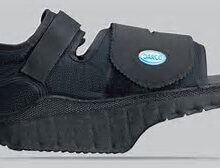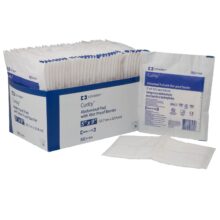Wound Care
In this article, we will explore the significance of wound care in sports medicine and highlight its essential role in the recovery process.
Wound care is a complex and extended process in which the skin and the underlying tissues repair themselves after the patient has experienced an injury.
For wound care to be successful, the skin and underlying tissues must have the opportunity to continue the healing process without interference from foreign matter. Without this opportunity, contamination of the wound can result. By preventing foreign matter from entering the wound, the pads, sponges, bandages and other wound covers in this section will allow the healing process to continue without interference.
Additionally, where diabetic wounds, ulcers etc. are concerned, the wound care process faces further complications. Because these wounds frequently occur on the soles of the feet, the simple act of walking places pressure on the wound and can inhibit the healing process. Consequently, footwear that shifts weight pressure from the injured part of the foot to an uninjured area can play a valuable role in the recovery process.
Wound Care In Sports Medicine
Sports medicine encompasses a comprehensive approach to the prevention, diagnosis, treatment, and rehabilitation of sports-related injuries. Among the various aspects of sports medicine, wound care holds immense importance in ensuring optimal healing and facilitating a swift return to sports activities.
Sports-related injuries often involve open wounds, cuts, or abrasions, which require prompt and appropriate wound management to minimize complications and promote athlete well-being.
Preventing Infection
One of the primary goals of wound care in sports medicine is to prevent infection. Athletes are susceptible to a wide range of bacteria, viruses, and fungi that can enter the body through open wounds, increasing the risk of infection. Proper wound care practices, such as cleaning the wound thoroughly, applying antiseptic solutions, and dressing the wound appropriately, help create a barrier against pathogens and reduce the chances of infection.
By effectively preventing and managing infections, athletes can avoid potentially serious complications that could impact their performance and overall well-being.
Promoting Healing
Optimal wound care plays a vital role in promoting efficient healing in sports-related injuries. Prompt and appropriate management of wounds, including proper cleaning, removal of foreign bodies, and application of suitable dressings, creates an environment conducive to healing. Wound dressings protect the wound from further trauma, reduce the risk of infection, and maintain a moist healing environment, facilitating the growth of new tissue and minimizing scarring.
Additionally, the use of advanced wound care techniques, such as negative pressure wound therapy or hydrogel dressings, can further enhance the healing process and expedite recovery.
Minimizing Scarring and Enhancing Cosmesis
In sports medicine, minimizing scarring is not only crucial for athlete recovery but also for cosmetic reasons. Proper wound care techniques, including appropriate wound closure, use of sutures or adhesive strips, and adherence to scar management protocols, help minimize scarring and promote better cosmetic outcomes.
By following proper wound care practices, healthcare professionals can ensure that athletes can return to their respective sports with minimal visible scarring, which can be especially important for athletes involved in aesthetic-focused sports or activities.
Psychological Impact
In addition to the physical aspect, wound care in sports medicine also addresses the psychological impact of injuries on athletes. Open wounds or significant injuries can cause emotional distress, anxiety, or fear of delayed recovery. By providing prompt and appropriate wound care, healthcare professionals can instill confidence in athletes, reassuring them that their injuries are being properly managed and that they are on the path to recovery.
This psychological support can positively impact an athlete’s motivation, compliance with treatment plans, and overall mental well-being during the rehabilitation process.
Prevention of Complications and Recurrences:
Proper wound care in sports medicine goes beyond the immediate healing process. It also plays a crucial role in preventing complications and recurrent injuries. Effective wound care practices minimize the risk of complications such as delayed healing, wound dehiscence (reopening), or the formation of chronic wounds. By providing education on wound care techniques, ensuring proper hygiene, and recommending appropriate protective measures, healthcare professionals help athletes minimize the chances of future wound-related issues, allowing them to perform at their best and prevent potential setbacks.
Conclusion
Wound care is an essential component of health care generally and of sports medicine in particular, playing a crucial role in the recovery and well-being of athletes. By prioritizing prompt and appropriate wound management, healthcare professionals can prevent infections, promote efficient healing, minimize scarring, address psychological concerns, and prevent complications or recurrences.




